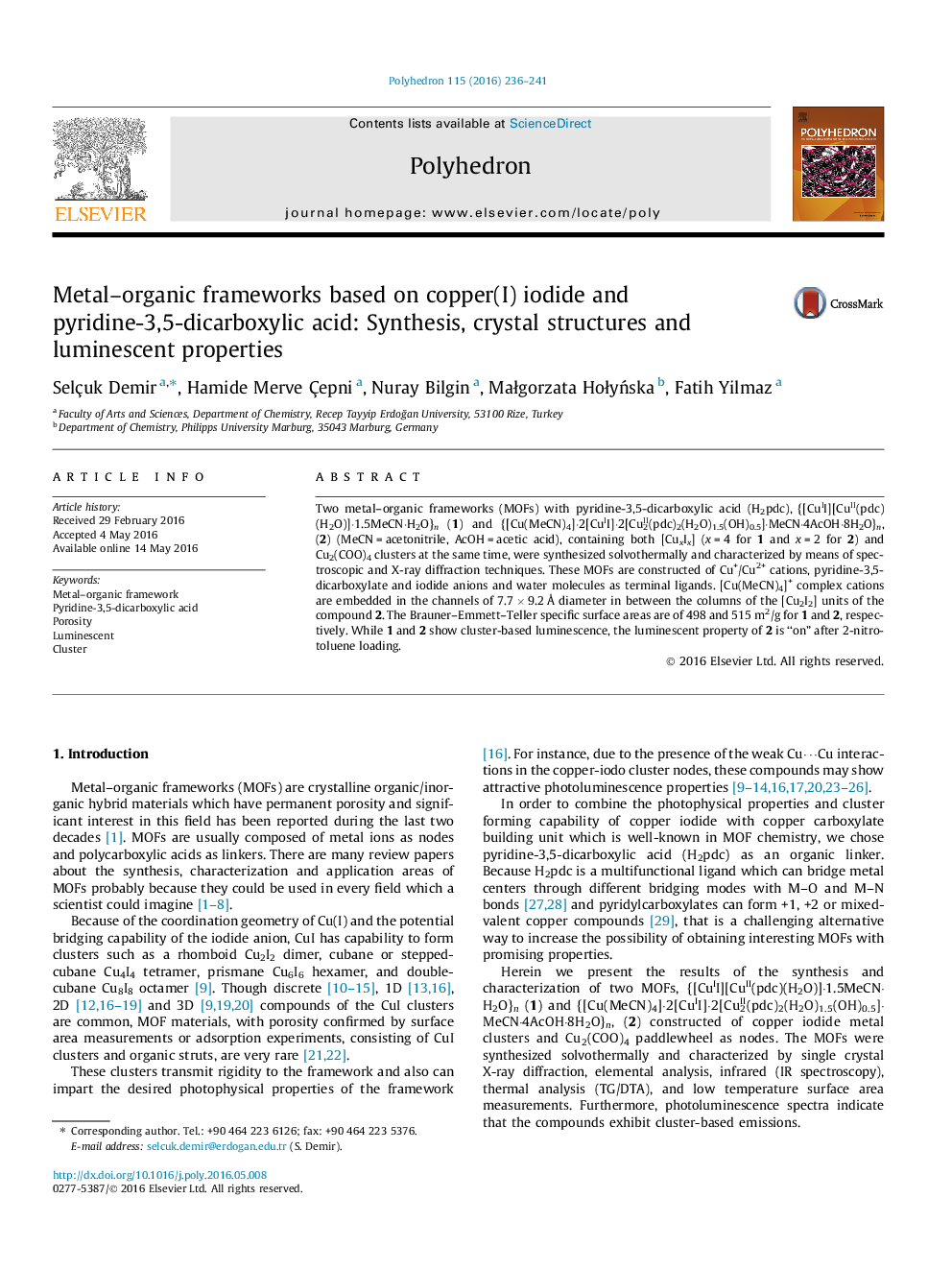| کد مقاله | کد نشریه | سال انتشار | مقاله انگلیسی | نسخه تمام متن |
|---|---|---|---|---|
| 1336342 | 1500225 | 2016 | 6 صفحه PDF | دانلود رایگان |

Two metal–organic frameworks (MOFs) with pyridine-3,5-dicarboxylic acid (H2pdc), {[CuII][CuII(pdc)(H2O)]·1.5MeCN·H2O}n (1) and {[Cu(MeCN)4]·2[CuII]·2[CuII2(pdc)2(H2O)1.5(OH)0.5]·MeCN·4AcOH·8H2O}n, (2) (MeCN = acetonitrile, AcOH = acetic acid), containing both [CuxIx] (x = 4 for 1 and x = 2 for 2) and Cu2(COO)4 clusters at the same time, were synthesized solvothermally and characterized by means of spectroscopic and X-ray diffraction techniques. These MOFs are constructed of Cu+/Cu2+ cations, pyridine-3,5-dicarboxylate and iodide anions and water molecules as terminal ligands. [Cu(MeCN)4]+ complex cations are embedded in the channels of 7.7 × 9.2 Å diameter in between the columns of the [Cu2I2] units of the compound 2. The Brauner–Emmett–Teller specific surface areas are of 498 and 515 m2/g for 1 and 2, respectively. While 1 and 2 show cluster-based luminescence, the luminescent property of 2 is “on” after 2-nitrotoluene loading.
Two metal–organic frameworks (MOFs) with pyridine-3,5-dicarboxylic acid were synthesized solvothermally and characterized. MOFs disclosed a 3-nodal 3,4,4-c net with an mmm topology for 1 and 2-nodal 3,4-c net with tbo topology for 2. They are successive examples of transferring cluster-based luminescent properties to the MOFs.Figure optionsDownload as PowerPoint slide
Journal: Polyhedron - Volume 115, 5 September 2016, Pages 236–241